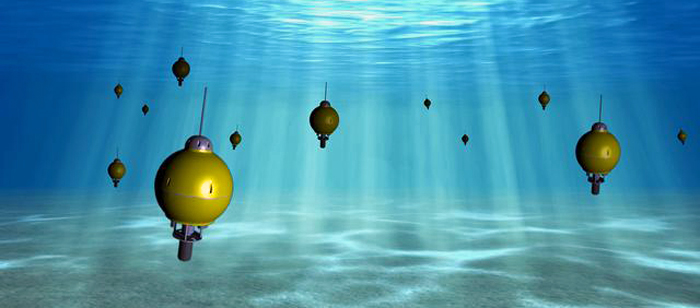
PhD Preliminary Examination
Design and Analysis of Underwater
Acoustic Networks with Reflected Links
Lloyd Emokpae
2:00pm Monday, 13 August 2012, ITE 325b, UMBC
Underwater acoustic networks (UWANs) have applications in environmental state monitoring, oceanic profile measurements, leak detection in oil fields, distributed surveillance, and navigation. For these applications, a set of nodes are employed to collaboratively monitor an area of interest and track certain events or phenomena. In addition, it is common to find autonomous underwater vehicles (AUVs) acting as mobile sensor nodes that perform search-and-rescue missions, reconnaissance in combat zones and coastal patrol. These AUVs are to work cooperatively to achieve a desired goal and thus need to be able to, in an ad-hoc manner, establish and sustain communication links in order to ensure some desired level of quality of service. Therefore, each node is required to adapt to environmental changes and be able to overcome broken communication links caused by external noise affecting the communication channel and due to node mobility. In addition, since radio waves tend to get absorbed in the water, it is common for most underwater applications to rely on acoustic rather than radio channels for long range communications. However, acoustic channels pose multiple challenging issues, most notably the high transmission delay due to slow signal propagation and the limited channel bandwidth due to high frequency attenuation. Furthermore, the inhomogeneous property of the water medium affects the sound speed profile while the signal surface and bottom reflections leads to multipath effects.
In this dissertation proposal, we address these networking challenges by developing protocols that take into consideration the underwater physical layer dynamics. We begin by introducing a novel surface-based reflection scheme (SBR) which takes advantage of the multipath effects of the acoustic channel. SBR works by using reflections from the water surface, and bottom, to establish non-line-of-sight communication links. SBR makes it possible to incorporate both line-of-sight and non-line-of-sight links by utilizing directional antennas, which will boost the signal-to-noise ratio at the receiver while promoting non-line-of-sight usage. Furthermore, we employ a directional underwater acoustic antenna which is composed of an array of hydrophones that can be summed up at various phases and amplitudes resulting in a beam-former. Networking protocols have been developed for node discovery, localization, medium access arbitration and geographical routing to exploit the SBR communication model.
To complete the dissertation, we plan to first extend the SBR scheme to be robust to Doppler frequency shifts. In our original implementation of SBR, we assume little to no drift between communicating nodes which might be acceptable for some applications. However, when dealing with AUVs, the effects of Doppler could affect the proposed channel impulse response recovery process if it is not handled properly. Thus, we plan on fine-tuning the SBR recovery mechanism to adjust for Doppler frequency shifts in real-time. Secondly, we plan on extending the proposed medium access arbitration protocol to account for varying water surface and bottom roughness which we assumed to be flat in our preliminary simulations. Thirdly, we intend to extend the proposed routing algorithm to account for multiple metrics, e.g., network delay, error rate and energy. Finally, we plan on building an acoustic modem prototype which utilizes a multimodal directional transducer to validate the SBR scheme. We also plan on validating the SBR scheme on the proposed acoustic modem using a water tank.
Committee: Drs. Mohamed Younis (Chair), John Pinkston, Tulay Adali and Ryan Robucci